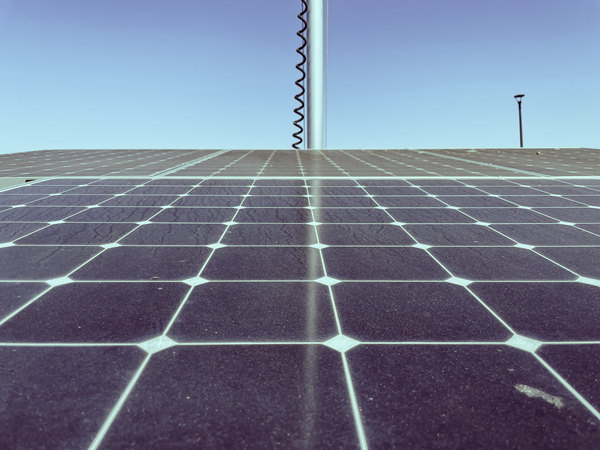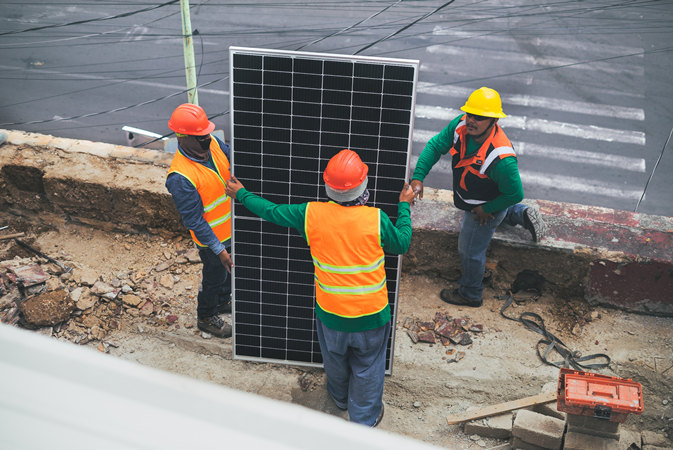Do Solar Panels Need Direct Sunlight?
For many people, the idea of powering their homes with renewable energy sources is becoming more appealing—not only are they helping to reduce their carbon footprint, but they can also save money in the long run. Many people like the idea of relying less on “the grid,” as well.
But before you take the leap and invest in solar panels, it's essential to understand exactly how they work. For this article, do solar panels need direct sunlight to function? Maybe you have a wall of trees on one or more sides, impacting how much sun is getting through. Maybe you live in the Northwest, where the sun remains hidden behind a dense blanket of clouds most days.
When it comes to solar energy, one of the most common questions is whether or not solar panels need direct sunlight in order to work. We'll break this question down a little bit. Solar panels do need direct sunlight to generate electricity, but they can also generate electricity from indirect sunlight and even on cloudy days, just to a lesser degree.
We'll explore the concept of direct sunlight and why it matters regarding solar panel efficiency. We'll look at what type of light sources are most effective for powering your home with solar energy and discuss strategies for getting the most out of available sunlight, no matter the weather conditions.
Table of contents:
- How Much Direct Sunlight Do Solar Panels Need?
- Can Solar Panels Charge Without Direct Sunlight?
- What Happens If One Solar Panel Is Shaded?
- So Do Solar Panels need Direct Sunlight?
How Much Direct Sunlight Do Solar Panels Need?
Solar panels don’t need to be bathed in direct sunlight in order to generate electricity. Photovoltaic cells rely on particles of light called photons to generate power. These particles are still active and present on overcast days, just to a lesser degree.

Ideally, you should aim for your solar panels to get at least four hours of direct sunlight a day in order to recharge their batteries fully. Of course, this amount can vary greatly depending on the size and type of panel that you have installed.
This opens up a lot of options for installation locations. Some locations will be shaded in the morning but in fairly direct light in the afternoon or the other way around. Either of these situations works perfectly fine. Some arrays can follow the sun's movement to capitalize on its rays. These are a much more expensive investment, however.
Some models can even function efficiently with less sunlight than four hours daily. As long as your panels have access to some form of natural light, they should be able to operate effectively and provide your home with renewable energy.
Can Solar Panels Charge Without Direct Sunlight?
Yes, solar panels can still charge without direct sunlight. This is because photovoltaic (PV) cells are able to convert photons into electricity regardless of whether it’s direct or indirect. This technology means that solar panels can still produce some electricity on cloudy days or when they're in partial shade. The amount of energy produced in these conditions won't be as high as it would be with direct sunlight, but some power can still be generated, opening up a lot of options for installations.
Explore more in the article- Do Solar Panels Work On Cloudy Days?
What Happens If One Solar Panel Is Shaded?
If one solar panel is shaded, it can affect the performance of the entire system, as the shaded panel will not be able to produce as much energy as an unshaded panel would. There are a few different types of inverters that are commonly used in residential and RV solar installs. The type you choose can actually have an impact on how well your system performs when one or more panels are shaded.

String Inverters
These are the inverters that the majority of homeowners have due to their cost compared to the other options. This inverter type is centrally located in a system (say, your garage), and all of the DC that your panels generate is delivered to it before it handles inverting from DC to AC.
String inverters are a great choice for solar systems with ample direct sunlight and typically have panels mounted in one large grouping, such as your south-facing roof.
It's crucial to make sure that all of the panels behave at similar levels since the total energy output of the system is based on the performance of its lowest-performing panel. Otherwise, the optimum output won't be achieved.
There are a few workarounds for the issues that come with String inverters. A good one is an optimizer. The optimizer works with the String inverter to balance out the DC load before converting.
Microinverters
Microinverters are, as the name implies, small inverters mounted to each solar panel individually. Instead of having a single large unit that you have to pay for, you have to buy dozens of smaller units.
This type of system has its advantages for several reasons:
●If one inverter goes down, it doesn’t drop your whole system.
●If you have indirect or varying sunlight or shaded panels, your panels are stand-alone, and the performance of one has minimal impact on the system as a whole.
●If you might want to add more panels in the future.
●You get module-level monitoring, allowing greater control of your panel's efficiency.
Because they do all of the inverting directly at the source, microinverters allow greater control and overall dependability that String inverters.
So Do Solar Panels need Direct Sunlight?
Overall, solar panels do need some degree of direct sunlight in order for them to work effectively and efficiently. However, they are also able to generate power from indirect light sources such as clouds and shade, which makes them a great source of renewable energy even on overcast days or when partially shaded by trees or buildings, especially when your system design takes these challenges into consideration.
At Renogy, we have an unbeatable selection of solar panels for camping. But that's not all - our team has also developed some of the best power inverters in the industry. So if you're looking for a reliable and efficient solar system, look no further! Plus, our website is packed with helpful articles to make building your own system much simpler and easier. Get started today and enjoy the power of renewable energy!
Related articles:
Important Things You Should Know When Buying A House With Solar Panels
Are Solar Panels Worth It In Texas?
How To Get Free Solar Panels From The Government In 2023








